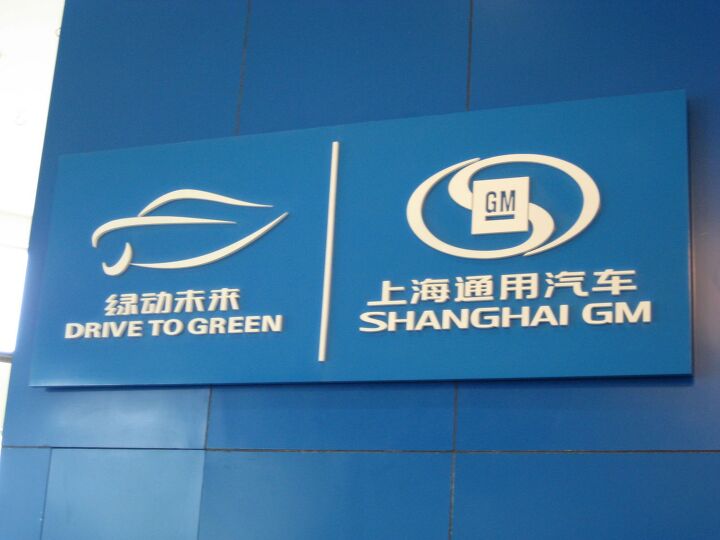One Percent Of GM China Worth $85m
Fresh details on GM’s Asian wranglings are coming in, and it seems that SAIC paid The General a mere $85m for the one percent needed to control the joint venture. GM’s Nick Reilly tells the New York Times:
the 51 percent stake would give S.A.I.C. the right to approve the venture’s budget, future plans and senior management. But the venture has a cooperative spirit in which S.A.I.C. has already been able to do so… S.A.I.C. wanted to have a majority stake to consolidate the venture in its financial reporting
Which is about as credible as the conclusion that the Shanghai and India deals are going to provide GM International with a meaningful amount of cash with which to rescue its European and Korean divisions. As it turns out, the Indian deal isn’t going to translate into free cash for GM. GM and SAIC will set up a joint Hong Kong-based investment company, which GM will give its Indian operations and SAIC will fund with $300-$530m, bringing its overall value to $650m.
Reilly explains the value of the India venture thusly to the WSJ:
SAIC’s participation helps GM “defray or share large investment” required for the India push and help the partners achieve results faster, Mr. Reilly said in a conference call with reporters. It also allows GM to market more products in India that had not been “envisaged in our GM-only plan,” particularly ultracheap micro minivans and buses that GM makes with two Chinese partners.
But here’s the rub, as explained by Reilly:
The long-term goal of the Hong Kong investment company will be to expand into other emerging markets. But the initial management structure will be in India, while any expansion into other emerging markets would be managed from G.M.’s Asian headquarters in Shanghai
Though this partnership will not be without its value, the idea that this sale will actually help GM International’s cash position is suspect at best. The $85m for the one percent of SAIC is clear cash, but it doesn’t begin to scratch $413m recently spent on Daewoo’s share offering, let alone the estimated $5b needed to restructure Opel.
So what is the real payoff for GM? Possibly a larger stake in GM-Wuling, although Reilly says “we don’t have anything to announce on that, but SAIC has been very supportive in discussions around that.” The only thing looking like a real benefit from this deal is only hinted at by Reilly:
GM also has been “able to achieve some funding for other activities [in China] from the Chinese banking sector, which would have been difficult to do on our own,”
More by Edward Niedermeyer
Latest Car Reviews
Read moreLatest Product Reviews
Read moreRecent Comments
- Redapple2 Love the wheels
- Redapple2 Good luck to them. They used to make great cars. 510. 240Z, Sentra SE-R. Maxima. Frontier.
- Joe65688619 Under Ghosn they went through the same short-term bottom-line thinking that GM did in the 80s/90s, and they have not recovered say, to their heyday in the 50s and 60s in terms of market share and innovation. Poor design decisions (a CVT in their front-wheel drive "4-Door Sports Car", model overlap in a poorly performing segment (they never needed the Altima AND the Maxima...what they needed was one vehicle with different drivetrain, including hybrid, to compete with the Accord/Camry, and decontenting their vehicles: My 2012 QX56 (I know, not a Nissan, but the same holds for the Armada) had power rear windows in the cargo area that could vent, a glass hatch on the back door that could be opened separate from the whole liftgate (in such a tall vehicle, kinda essential if you have it in a garage and want to load the trunk without having to open the garage door to make room for the lift gate), a nice driver's side folding armrest, and a few other quality-of-life details absent from my 2018 QX80. In a competitive market this attention to detai is can be the differentiator that sell cars. Now they are caught in the middle of the market, competing more with Hyundai and Kia and selling discounted vehicles near the same price points, but losing money on them. They invested also invested a lot in niche platforms. The Leaf was one of the first full EVs, but never really evolved. They misjudged the market - luxury EVs are selling, small budget models not so much. Variable compression engines offering little in terms of real-world power or tech, let a lot of complexity that is leading to higher failure rates. Aside from the Z and GT-R (low volume models), not much forced induction (whether your a fan or not, look at what Honda did with the CR-V and Acura RDX - same chassis, slap a turbo on it, make it nicer inside, and now you can sell it as a semi-premium brand with higher markup). That said, I do believe they retain the technical and engineering capability to do far better. About time management realized they need to make smarter investments and understand their markets better.
- Kwik_Shift_Pro4X Off-road fluff on vehicles that should not be off road needs to die.
- Kwik_Shift_Pro4X Saw this posted on social media; “Just bought a 2023 Tundra with the 14" screen. Let my son borrow it for the afternoon, he connected his phone to listen to his iTunes.The next day my insurance company raised my rates and added my son to my policy. The email said that a private company showed that my son drove the vehicle. He already had his own vehicle that he was insuring.My insurance company demanded he give all his insurance info and some private info for proof. He declined for privacy reasons and my insurance cancelled my policy.These new vehicles with their tech are on condition that we give up our privacy to enter their world. It's not worth it people.”


































Comments
Join the conversation
Good God, what a mess.